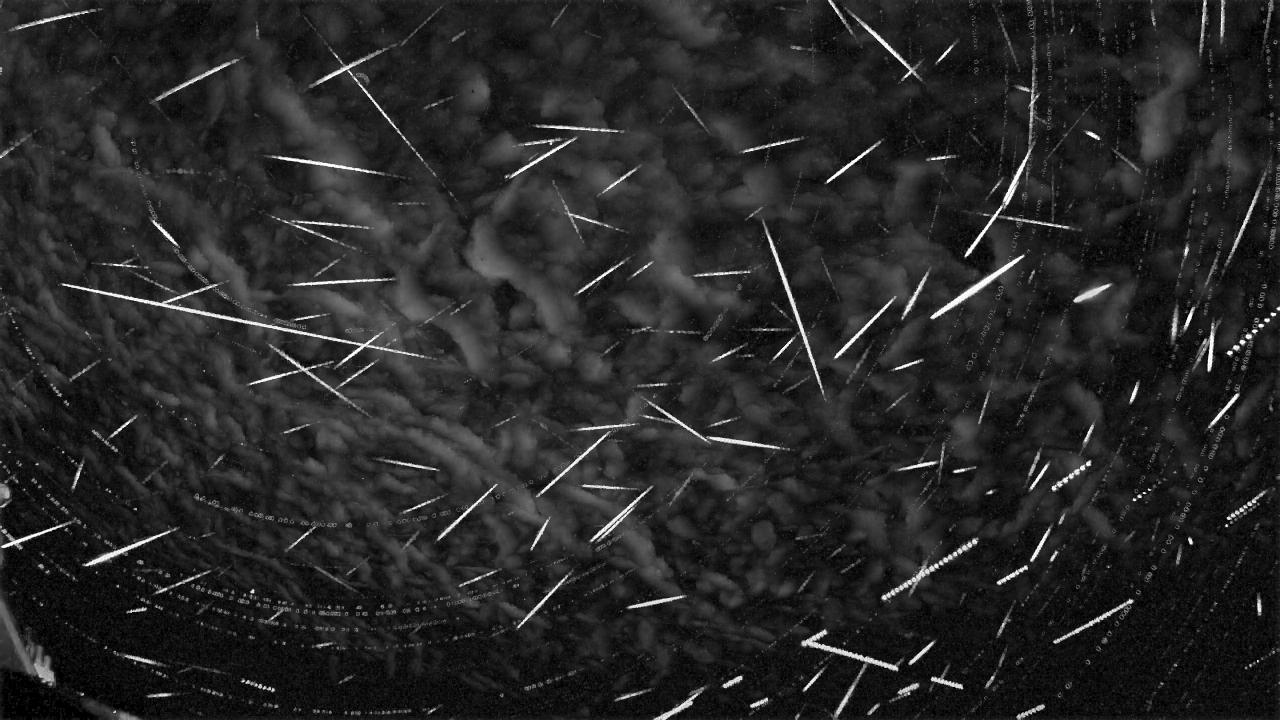
This is the first micrometeorite I found. It is an S-type barred olivine micrometeorite. I found it in material I collected from the roof of the Rolle building at the University of Plymouth. This image and chemical analysis were obtained using a scanning electron microscope at the University of Plymouth.
What are micrometeorites? Well, they are tiny particles of extra-terrestrial matter, typically ranging from a fraction of a millimetre (0.05mm) to around a millimetre in size. They are remnants of comets, asteroids, and other celestial bodies that have entered the Earth’s atmosphere and survived the descent to the Earth’s surface.
These particles are composed of various materials, including silicate minerals (e.g. Olivine), metals such as iron and nickel, and sometimes even organic compounds. They can be found in various environments, including polar regions, deep-sea sediments, and more recently in urban areas.
Studying micrometeorites can provide valuable insights into the composition and evolution of the solar system.
If you want to know more about micrometeorites and how to collect and identify them, then check out these links
- Project Stardust
- Micro-meteorites.com
- City Stardust
- Evaluating urban micrometeorites as a research resource
Urban Micrometeorites
My students and I search for ‘urban’ micrometeorites. That is, from material that has collected on roofs in both towns and in the countryside. Samples are collected directly off flat roofs (see image below), from roof gutters, and also from down pipes using sample collection chambers (see images below).


After washing and sieving the roof material (see links above for more details about the exact techniques used), both my students and I search for the micrometeorites using stereoscopic microscopes. At home I use an old Swift Instruments stereoscopic microscope (see image below). The set-up I, and my students, use at the University of Plymouth is a little more advanced (see image below).
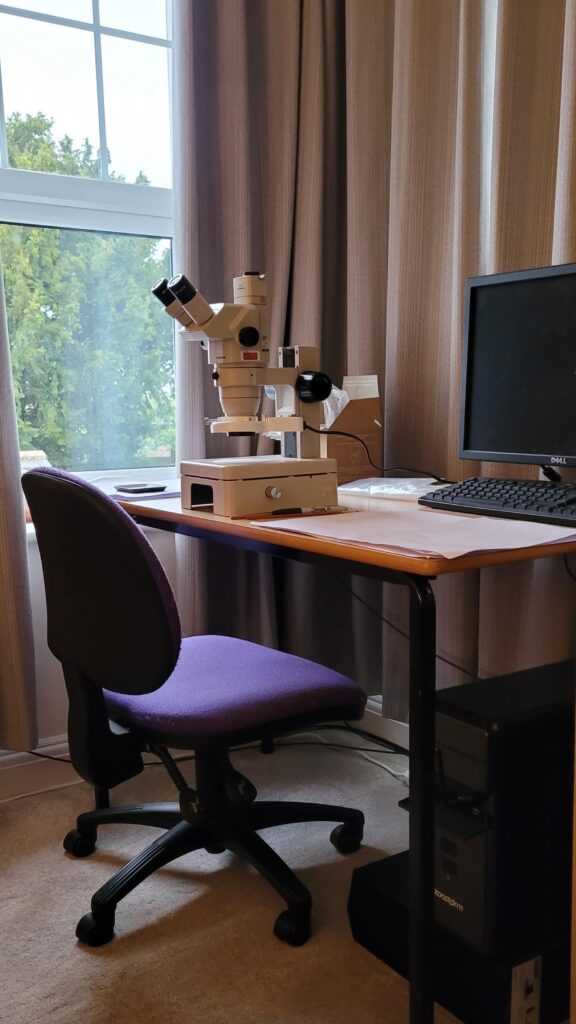

Currently I have no imaging or analytical set-ups at home to photograph or analyse the micrometeorites I find, so all the images and analyses on this site come from photographic equipment and analytical instruments at the University of Plymouth.
Both my students and I are lucky to have access to a benchtop SEM (see image below), which we both use to image the samples we pick. Currently, it does not have the capacity to do elemental analysis, so for those we still need to take our samples to the Plymouth Electron Microscope Centre (PEMC).
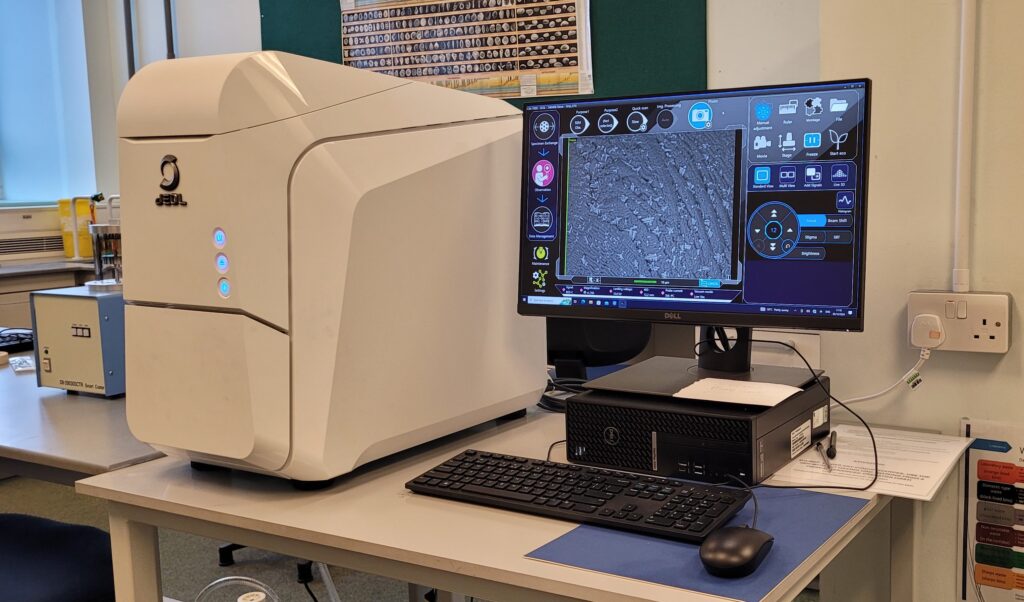
Micrometeorites samples
Below are some of the micrometeorites (MM) I have found to date. Classification of the MM’s uses the scheme outlined in Genge et al. (2008). If you wish to compare my urban micrometeorites with others that have been collected, then check out this page on the characterisation of micrometeorites and this comprehensive searchable database.
SGMM-R1

Sample ID – SGMM-R1
Group – Melted MM
Class – Cosmic Spherules (CS)
Type – Silicate (S)
Subtype – Barred Olivine (BO)
Location – Roof of the Rolle Building, University of Plymouth.
Date of ID – 8/4/2024
Photo – Backscattered electron microscopy image – PEMC

Sample ID – SGMM-R1
Description – Barred Olivines (BO) are formed at around 1815 degrees Celsius. They are the most commonly found variety of micrometeorite; BO spherules can easily be identified by the parallel bars of olivine that tend to run perpendicular to the length of the micrometeorite.
Photo – Backscattered electron microscopy image – PEMC

Sample ID – SGMM-R1
Description – Magnified view of the surface of the BO meteorite showing the growth of dendritic magnetite crystals (white Christmas tree like structures) on the olivine matrix.
Photo – Backscattered electron microscopy image – PEMC
SGMM-R2

Sample ID – SGMM-R2
Group – Melted MM
Class – Cosmic Spherules (CS)
Type – Silicate (S)
Subtype – Cryptocrystalline, Turtleback (CC-t)
Location – Roof of the Rolle Building, University of Plymouth.
Date of ID – 20/6/2024
Photo – Backscattered electron microscopy image – JOEL JCM-7000 Bench Top SEM
SGMM-L1

Sample ID – SGMM-L1
Group – Melted MM
Class – Cosmic Spherules (CS)
Type – Silicate (S)
Subtype – Porphyritic Olivine (PO)
Location – Roof of the Library Building, University of Plymouth.
Date of ID – 13/5/2024
Photo – Backscattered electron microscopy image – JOEL JCM-7000 Bench Top SEM

Sample ID – SGMM-L1
Description – Magnified view of the surface of the PO meteorite showing olivine microphenocrysts with equant, euhedral and skeletal morphologies within a glassy mesostasis matrix, accompanied by dendritic magnetite crystals.
Photo – Backscattered electron microscopy image – JOEL JCM-7000 Bench Top SEM
SGMM-L2

Sample ID – SGMM-L2
Group – Melted MM
Class – Cosmic Spherules (CS)
Type – Silicate (S)
Subtype – Cryptocrystalline, Turtleback (CC-t)
Location – Roof of the Library Building, University of Plymouth.
Date of ID – 24/5/2024
Photo – Backscattered electron microscopy image – JOEL JCM-7000 Bench Top SEM

Sample ID – SGMM-L2
Description – Magnified view of the surface of the CC-t meteorite showing the characteristic knobbly surface textures that resembles a turtle shell. Some small dendritic magnetite crystals can be seen in the depressions.
Photo – Backscattered electron microscopy image – JOEL JCM-7000 Bench Top SEM
SGMM-BD1

Sample ID – SGMMBD1
Group – Melted MM
Class – Cosmic Spherules (CS)
Type – Silicate (S)
Subtype – Barred Olivine (BO)
Location – Roof of the BD Vacutainer Systems plant, building 1, Plymouth.
Date of ID – 02/08/2024
Photo – Backscattered electron microscopy image – JOEL JCM-7000 Bench Top SEM
SGMM-BD2

Sample ID – SGMM-BD2
Group – Melted MM
Class – Cosmic Spherules (CS)
Type – Silicate (S)
Subtype – Porphyritic Olivine (PO)
Location – Roof of the BD Vacutainer Systems plant, building 1, Plymouth.
Date of ID – 02/08/2024
Photo – Backscattered electron microscopy image – JOEL JCM-7000 Bench Top SEM
SGMM-BD3
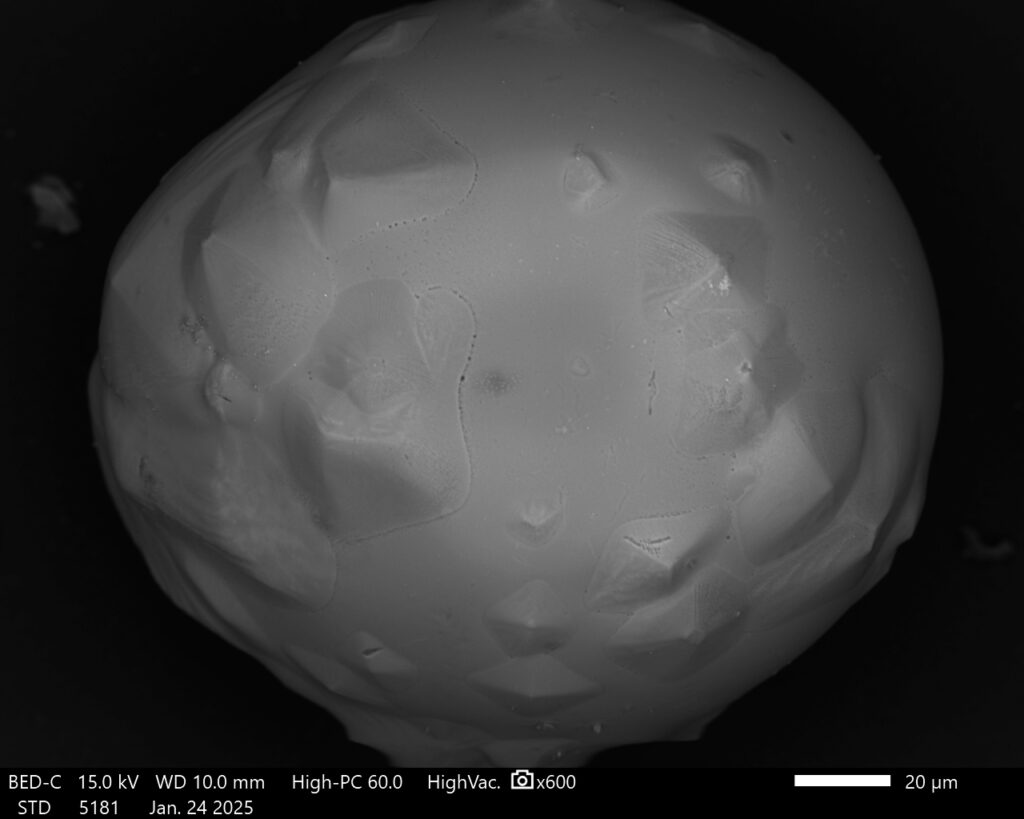
Sample ID – SGMM-BD3
Group – Melted MM
Class – Cosmic Spherules (CS)
Type – Silicate (S)
Subtype – Cryptocrystalline, Turtleback (CC-t)
Location – Roof of the BD Vacutainer Systems plant, building 1, Plymouth.
Date of ID – 24/01/2025
Photo – Backscattered electron microscopy image – PEMC
SGMM-BD4
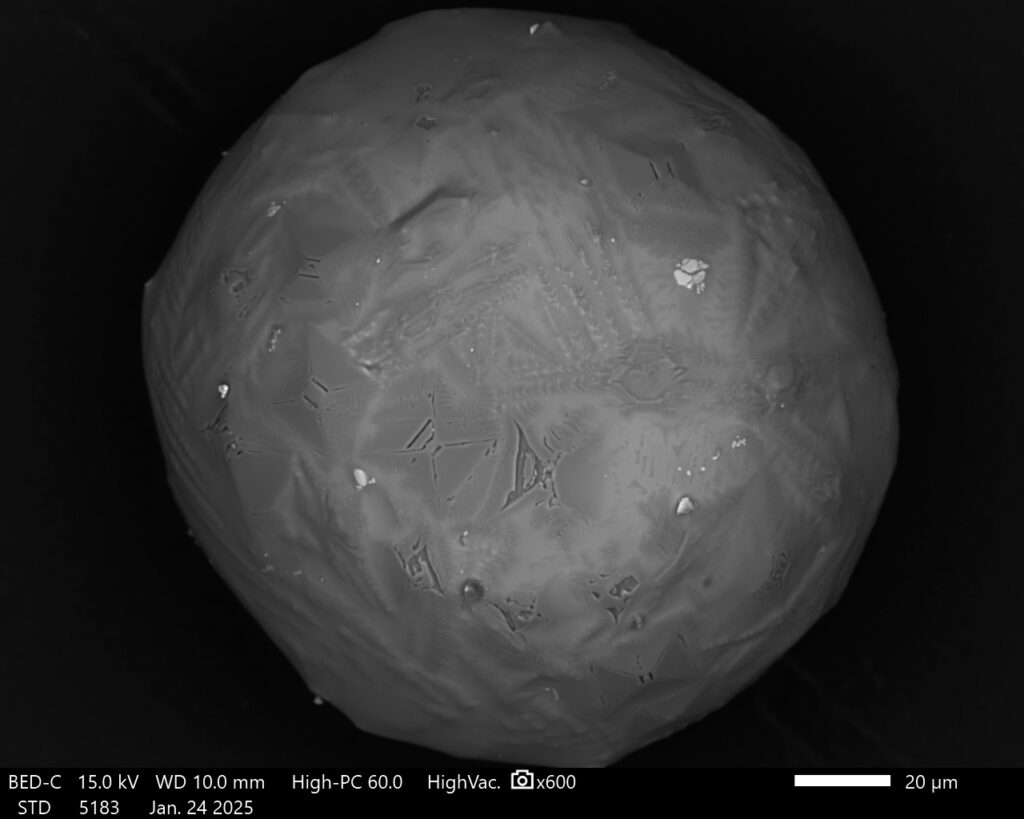
Sample ID – SGMM-BD4
Group – Melted MM
Class – Cosmic Spherules (CS)
Type – Silicate (S)
Subtype – Porphyritic Olivine (PO)
Location – Roof of the BD Vacutainer Systems plant, building 1, Plymouth.
Date of ID – 24/01/2025
Photo – Backscattered electron microscopy image – PEMC
SGMM-K1

Sample ID – SGMM-K1
Group – Melted MM
Class – Cosmic Spherules (CS)
Type – Silicate (S)
Subtype – Scoriaceous (Sc)
Location – Roof of the Kawasaki building, Plymouth.
Date of ID – 19/07/2024
Photo – Backscattered electron microscopy image – JOEL JCM-7000 Bench Top SEM
SGMM-K2
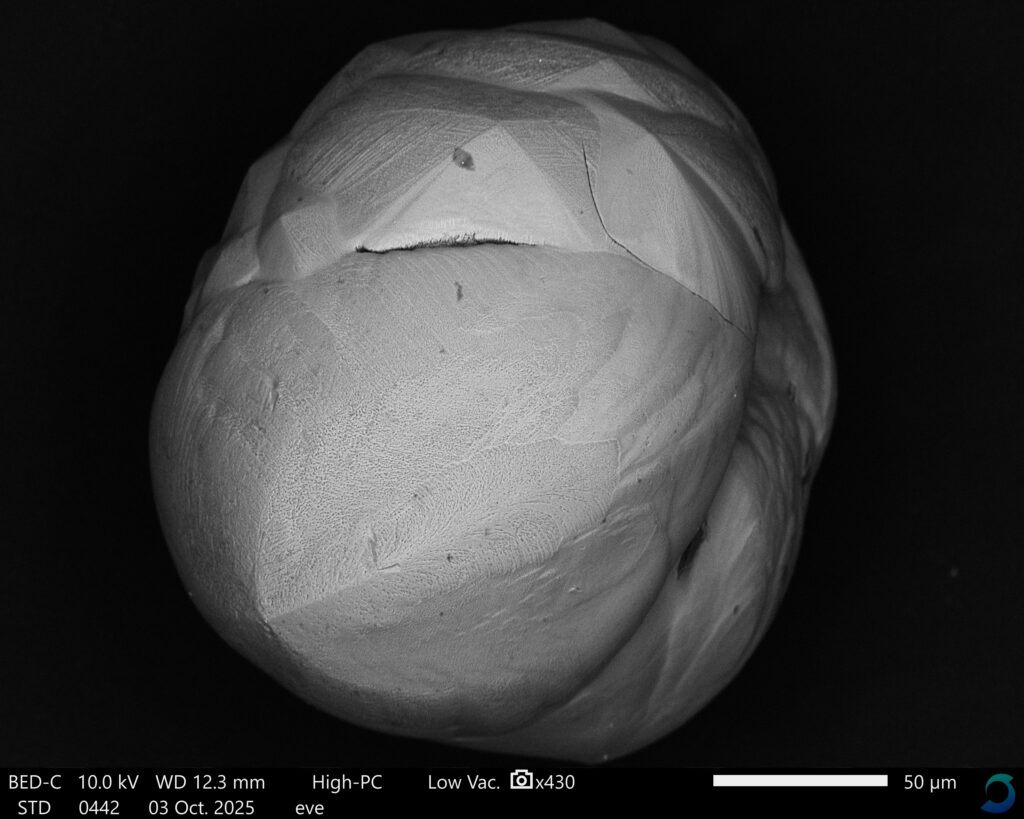
Sample ID – SGMM-K2
Group – Melted MM
Class – Cosmic Spherules (CS)
Type – Silicate (S)
Subtype – Cryptocrystalline (CC)
Location – Roof of the Kawasaki building, Plymouth
Date of ID – 03/10/2025
Photo – Backscattered electron microscopy image – JOEL JCM-7000 Bench Top SEM
SGMM-K3
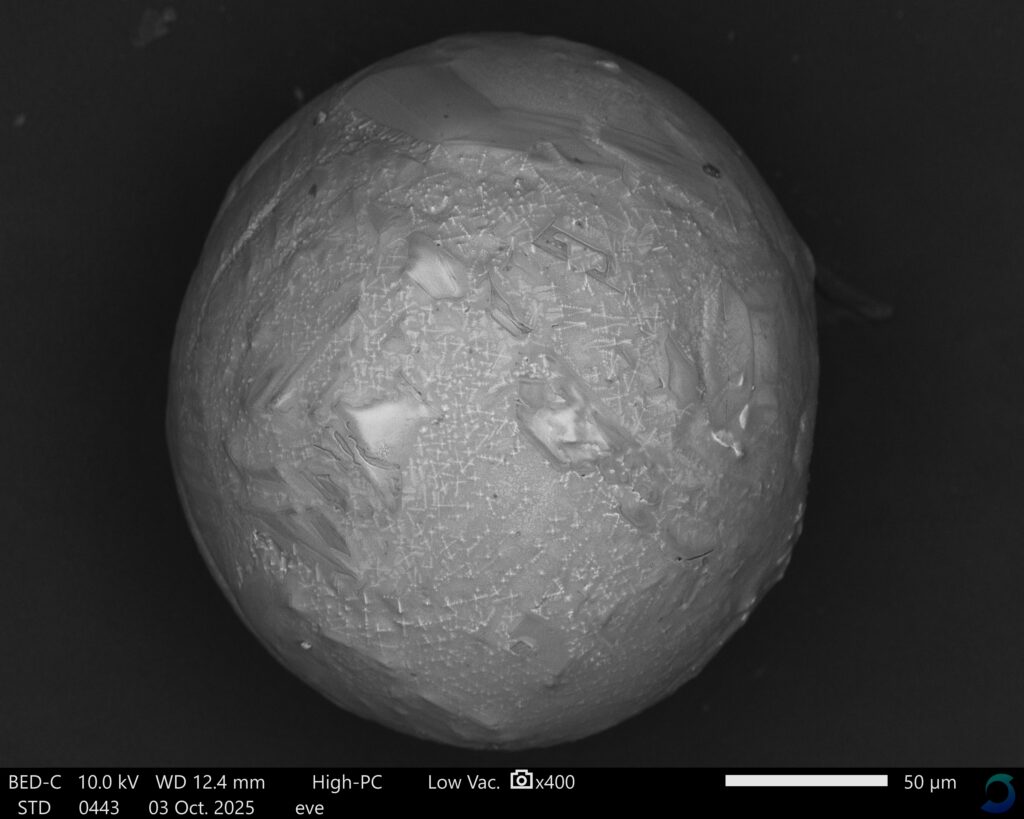
Sample ID – SGMM-K3
Group – Melted MM
Class – Cosmic Spherules (CS)
Type – Silicate (S)
Subtype – Porphyritic Olivine (PO)
Location – Roof of the Kawasaki building, Plymouth
Date of ID – 03/10/2025
Photo – Backscattered electron microscopy image – JOEL JCM-7000 Bench Top SEM
SGMM-GH1
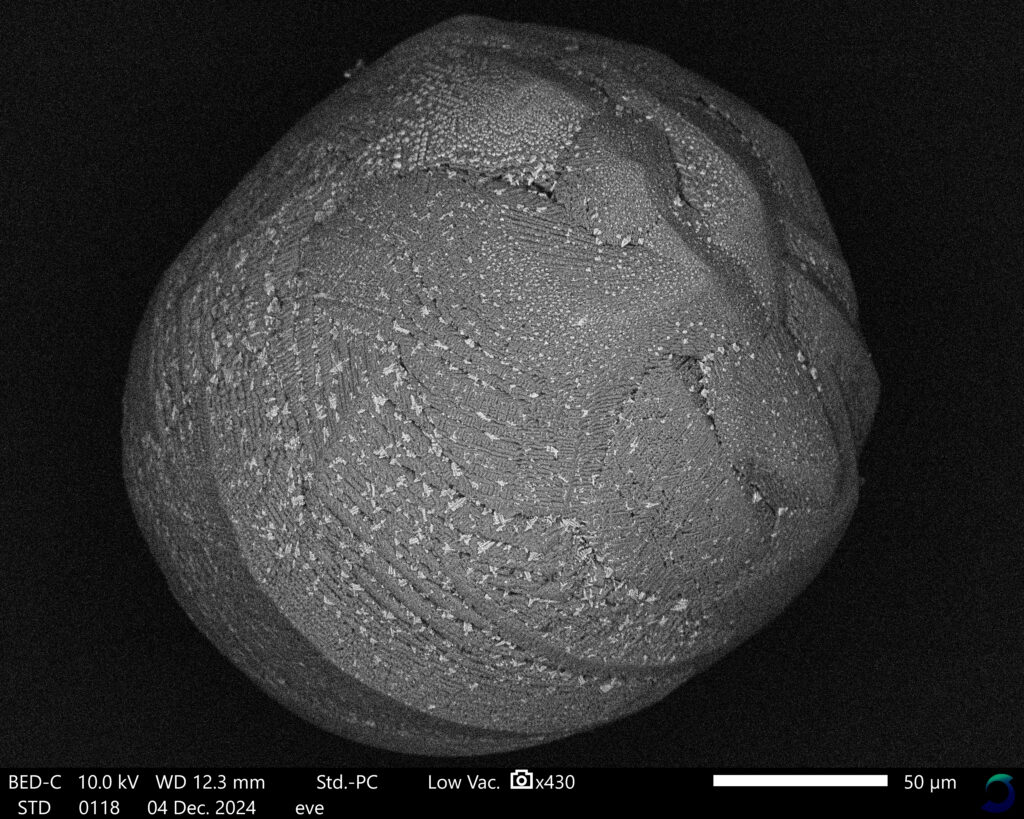
Sample ID – SGMM-GH1
Group – Melted MM
Class – Cosmic Spherules (CS)
Type – Silicate (S)
Subtype – Barred Olivine (BO)
Location – Roof of the Goonhilly Earth Station
Date of ID – 04/12/2024
Photo – Backscattered electron microscopy image – JOEL JCM-7000 Bench Top SEM
SGMM-GH2
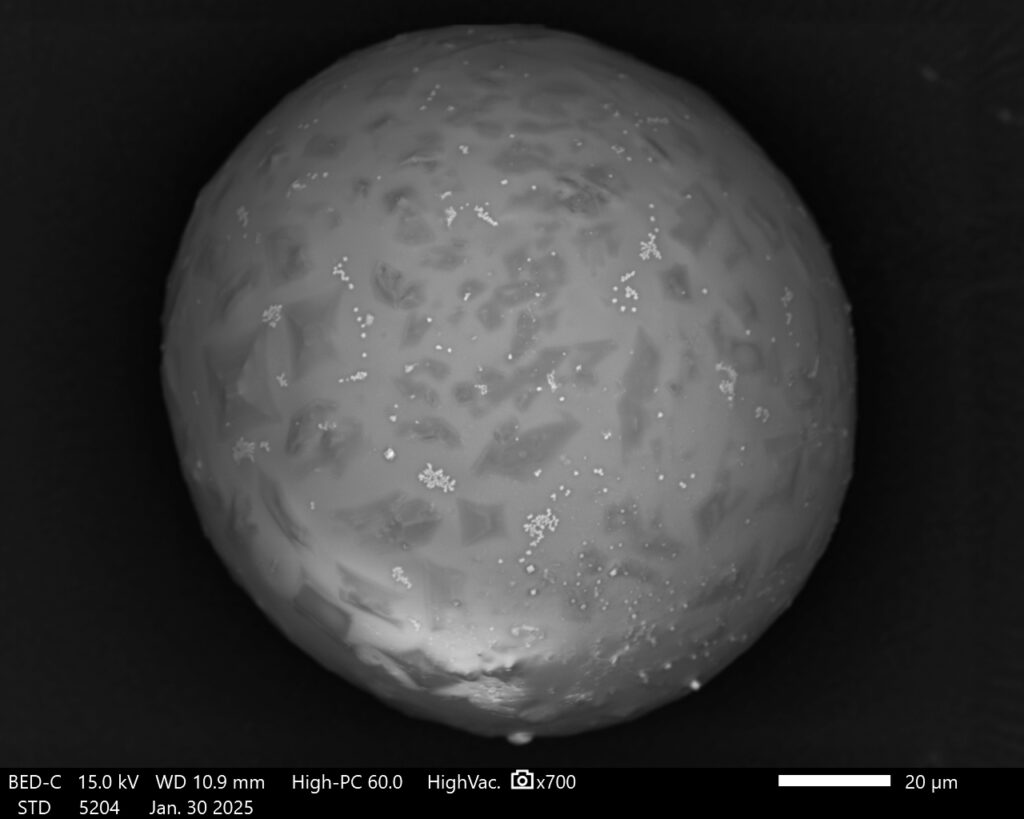
Sample ID – SGMM-GH2
Group – Melted MM
Class – Cosmic Spherules (CS)
Type – Silicate (S)
Subtype – Porphyritic Olivine (PO)
Location – Roof of the Goonhilly Earth Station
Date of ID – 30/01/2025
Photo – Backscattered electron microscopy image – PEMC
SGMM-GH3
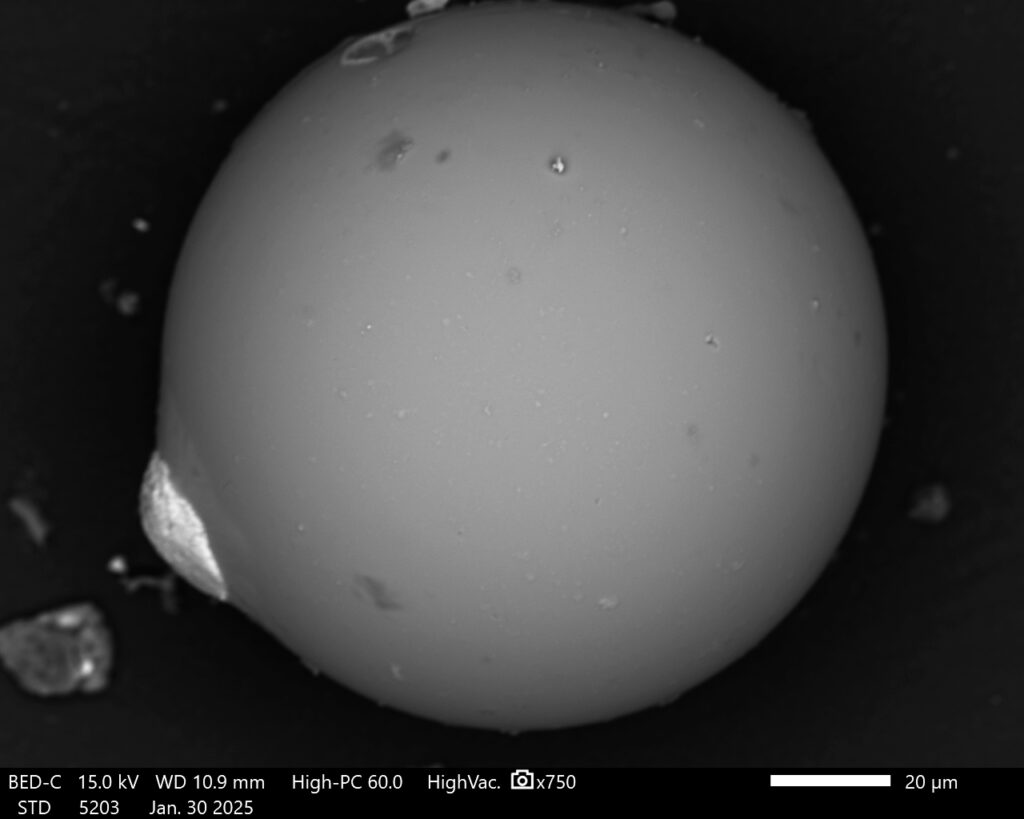
Sample ID – SGMM-GH3
Group – Melted MM
Class – Cosmic Spherules (CS)
Type – Silicate (S)
Subtype – Vitreous (V)
Location – Roof of the Goonhilly Earth Station
Date of ID – 30/01/2025
Photo – Backscattered electron microscopy image – PEMC
SGMM-GH4
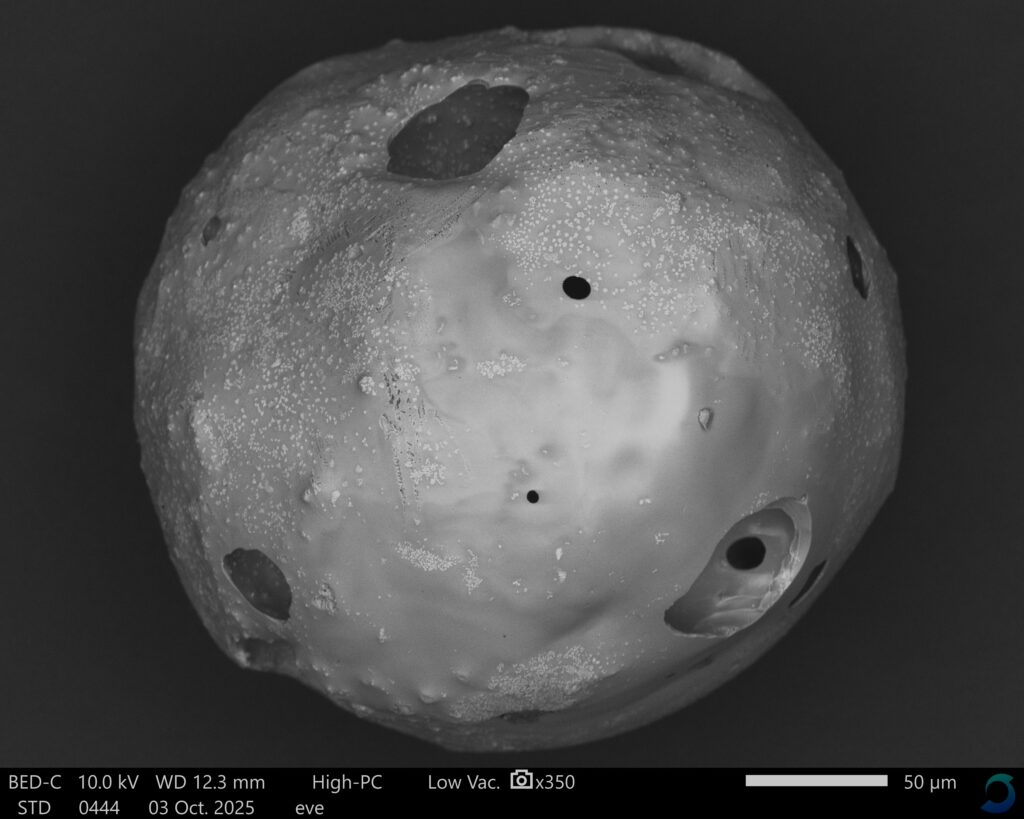
Sample ID – SGMM-GH4
Group – Melted MM
Class – Cosmic Spherules (CS)
Type – Silicate (S)
Subtype – Scoriaceous (Sc)
Location – Roof of the Goonhilly Earth Station.
Date of ID – 03/10/2025
Photo – Backscattered electron microscopy image – JOEL JCM-7000 Bench Top SEM
SGMM-SI1
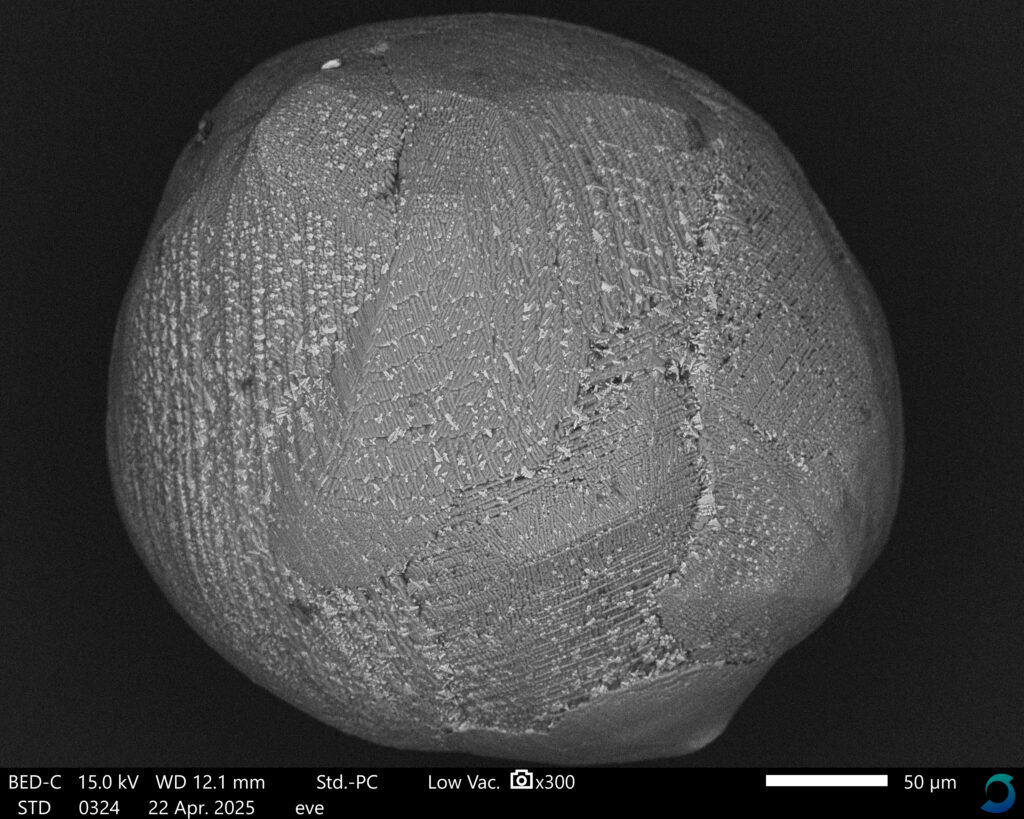
Sample ID – SGMM-SI1
Group – Melted MM
Class – Cosmic Spherules (CS)
Type – Silicate (S)
Subtype – Barred Olivine (BO)
Location – Roof of the Secure Innovation building, Saltash, Plymouth
Date of ID – 22/04/2025
Photo – Backscattered electron microscopy image – JOEL JCM-7000 Bench Top SEM
SGMM-SI2
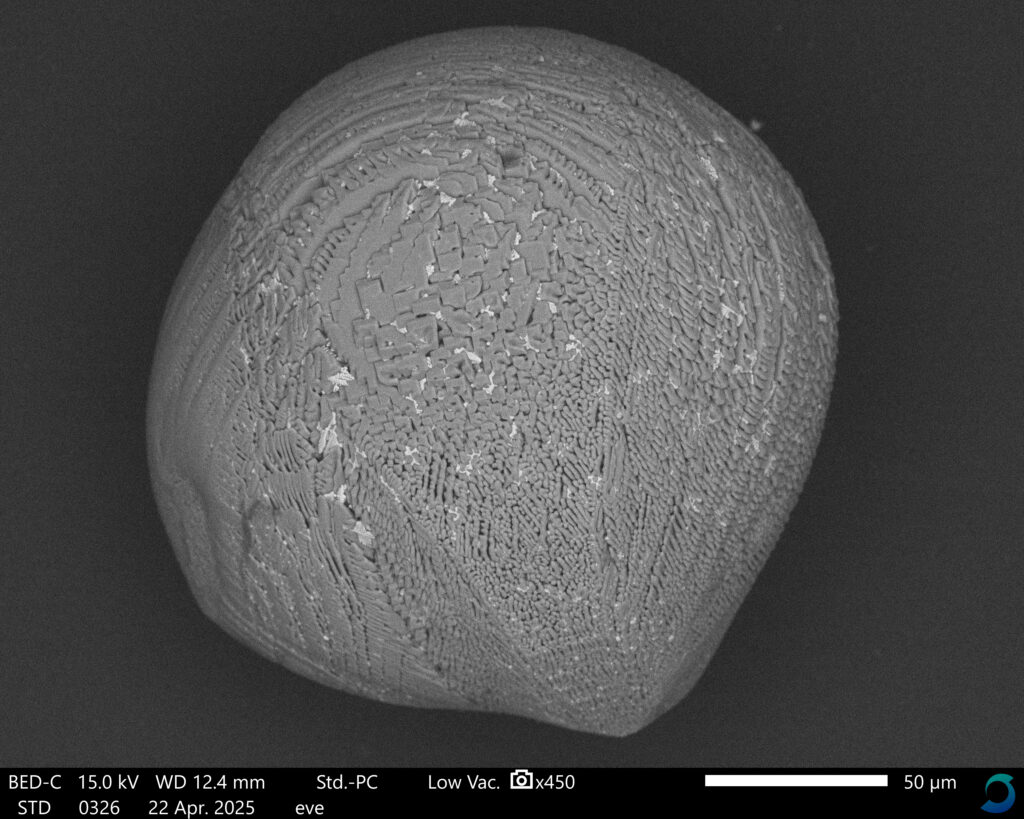
Sample ID – SGMM-SI2
Group – Melted MM
Class – Cosmic Spherules (CS)
Type – Silicate (S)
Subtype – Barred Olivine (BO)
Location – Roof of the Secure Innovation building, Saltash, Plymouth
Date of ID – 22/04/2025
Photo – Backscattered electron microscopy image – JOEL JCM-7000 Bench Top SEM
SGMM-SI3
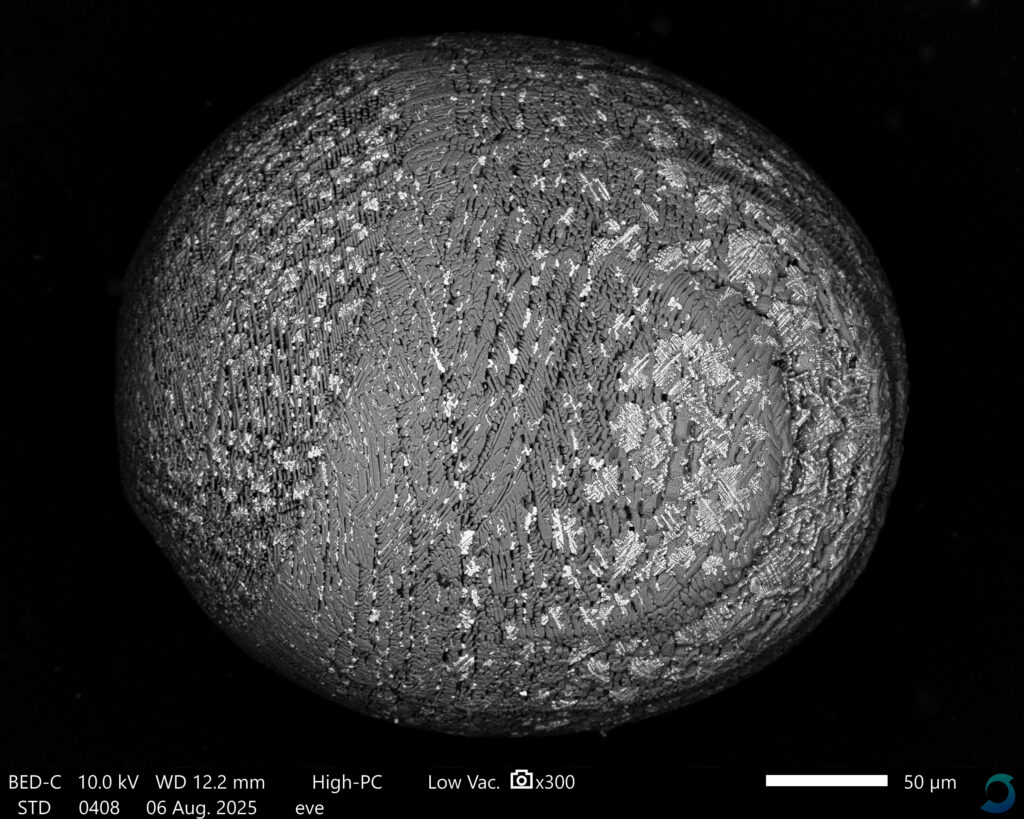
Sample ID – SGMM-SI3
Group – Melted MM
Class – Cosmic Spherules (CS)
Type – Silicate (S)
Subtype – Barred Olivine (BO)
Location – Roof of the Secure Innovation building, Saltash, Plymouth
Date of ID – 06/08/2025
Photo – Backscattered electron microscopy image – JOEL JCM-7000 Bench Top SEM
SGMM-SI4
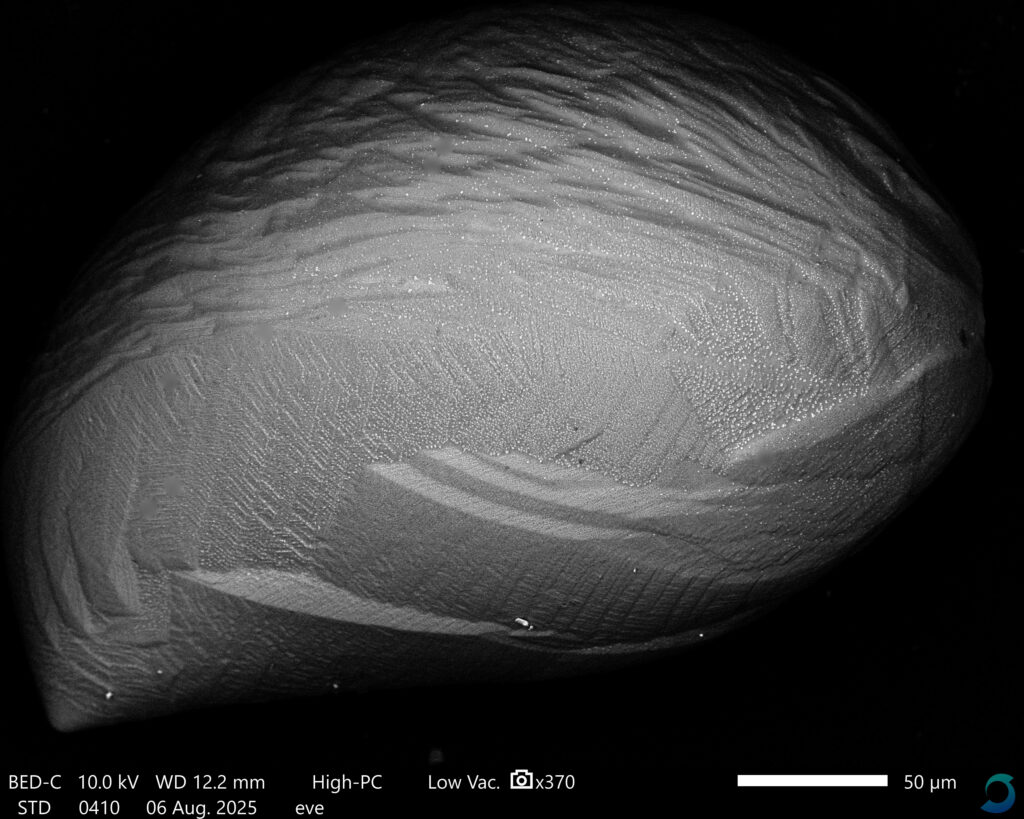
Sample ID – SGMM-SI4
Group – Melted MM
Class – Cosmic Spherules (CS)
Type – Silicate (S)
Subtype – Cryptocrystalline (CC)
Location – Roof of the Secure Innovation building, Saltash, Plymouth
Date of ID – 06/08/2025
Photo – Backscattered electron microscopy image – JOEL JCM-7000 Bench Top SEM
SGMM-SI5
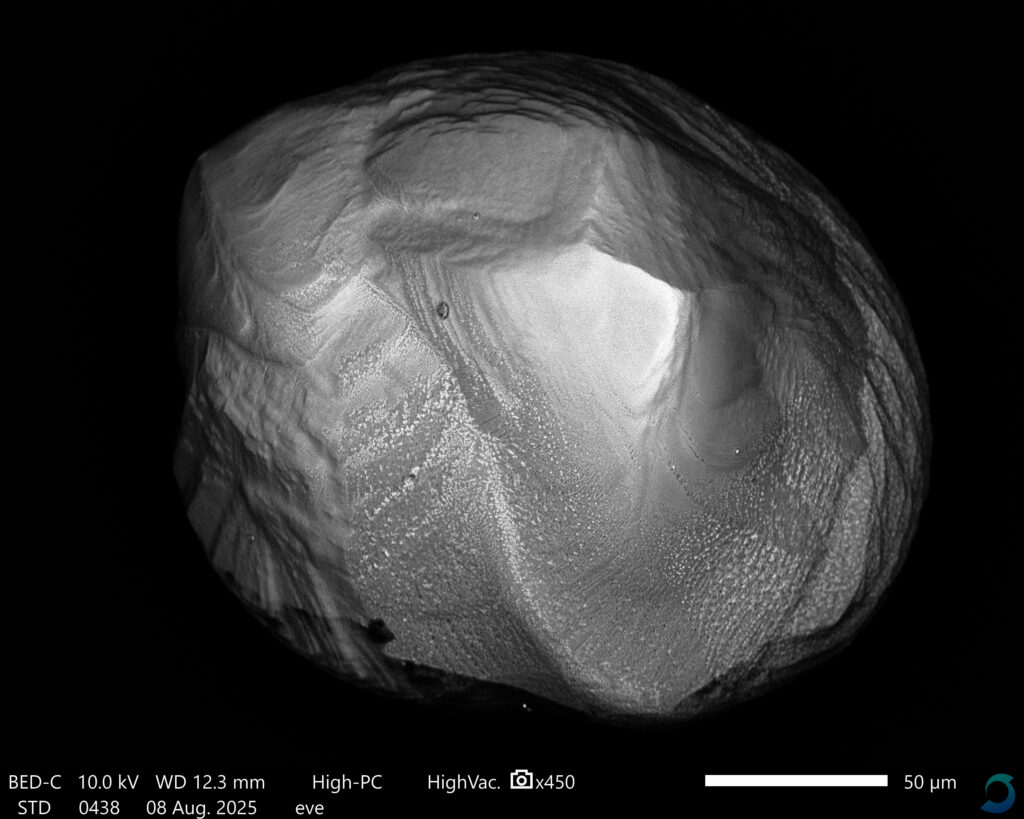
Sample ID – SGMM-SI5
Group – Melted MM
Class – Cosmic Spherules (CS)
Type – Silicate (S)
Subtype – Cryptocrystalline (CC)
Location – Roof of the Secure Innovation building, Saltash, Plymouth
Date of ID – 08/08/2025
Photo – Backscattered electron microscopy image – JOEL JCM-7000 Bench Top SEM
SGMM-SI6
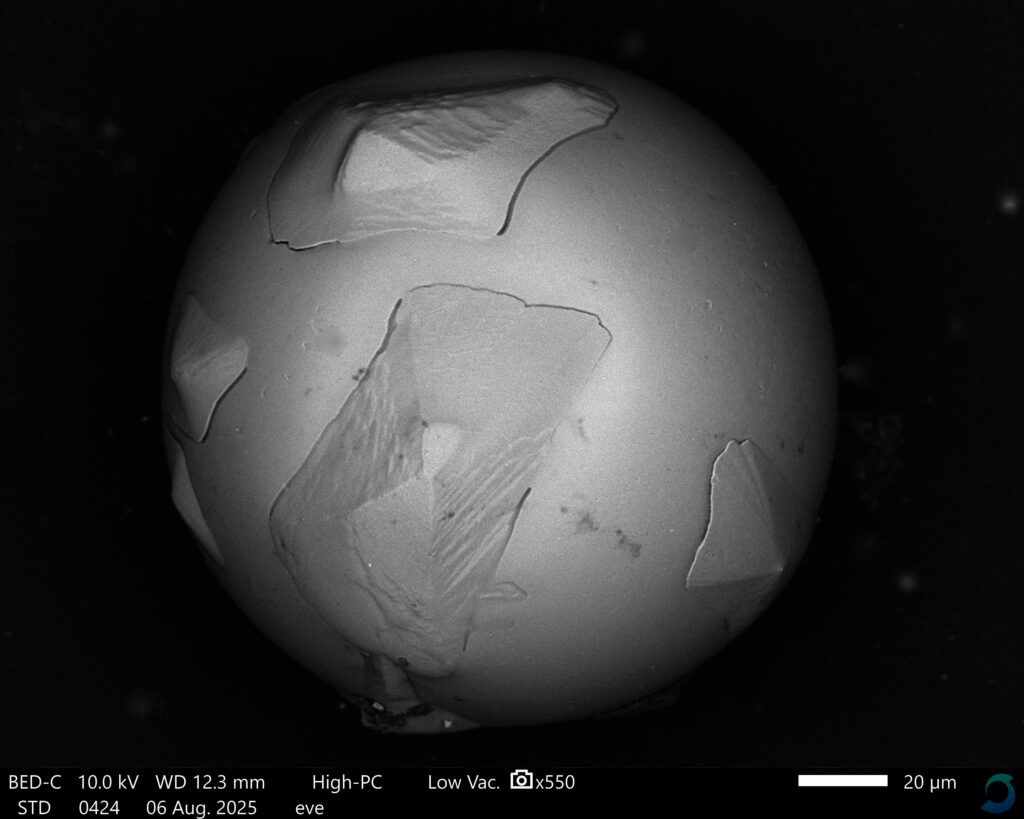
Sample ID – SGMM-SI6
Group – Melted MM
Class – Cosmic Spherules (CS)
Type – Silicate (S)
Subtype – Cryptocrystalline, Turtleback (CC-t)
Location – Roof of the Secure Innovation building, Saltash, Plymouth
Date of ID – 06/08/2025
Photo – Backscattered electron microscopy image – JOEL JCM-7000 Bench Top SEM
MicrometeorWrong samples
Below are images of what I thought were micrometeorites, but unfortunately they turned out not to be.

Description – When I first started searching for micrometeorites I picked out many examples like this one. It has an iron oxide composition and while there are Iron (I) – type micrometeorites they are very rarely found in urban environments. This is because most iron oxide spherules found on roofs are the result of human activity, like welding.
Photo – Backscattered electron microscopy image – PEMC

Description – Another commonly picked micrometeorwrong. Most like composed of iron-oxide and generated by the working of metal on a nearby building site.
Photo – Backscattered electron microscopy image – JOEL JCM-7000 Bench Top SEM
